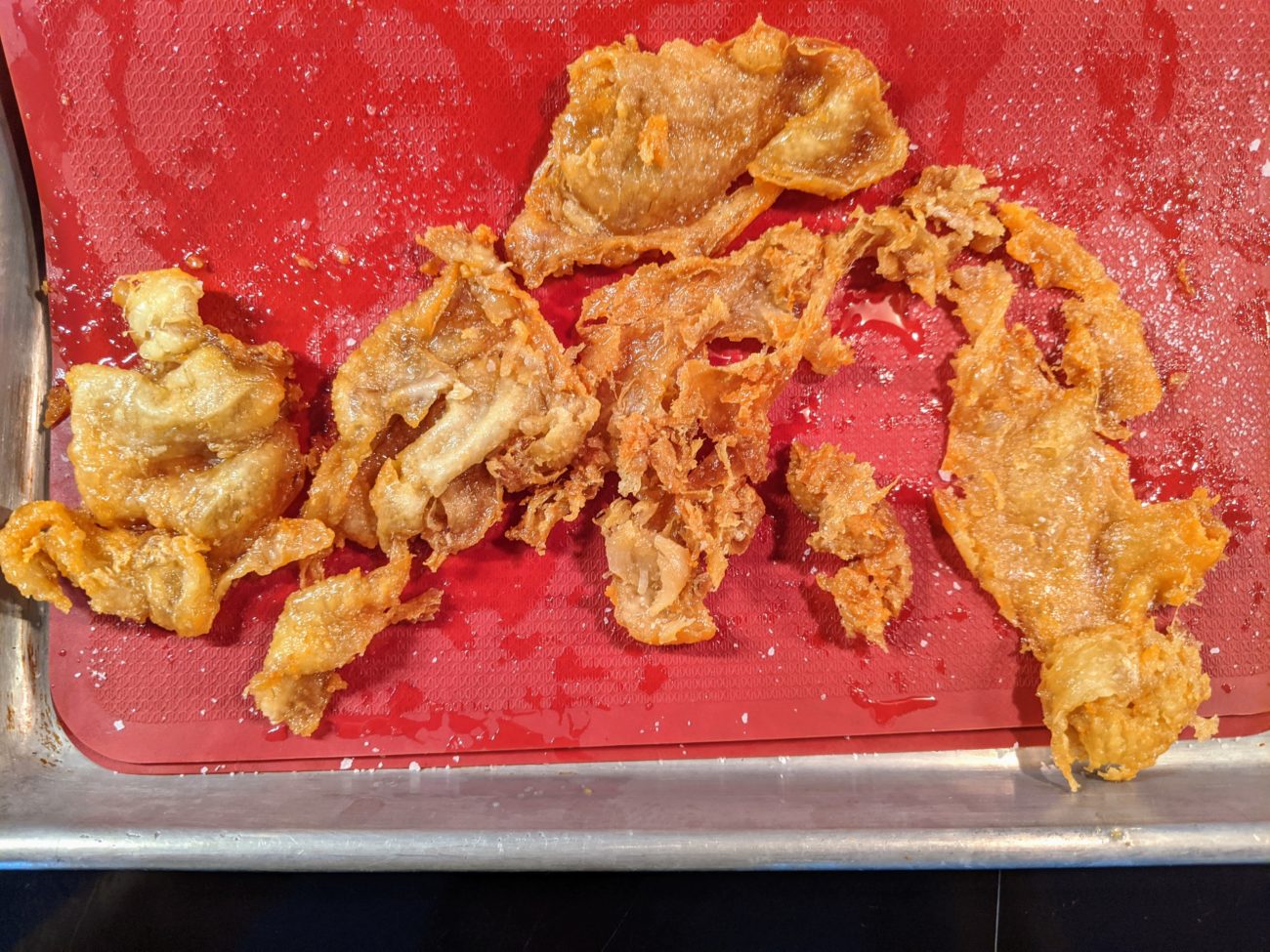
Rendering demands patience. Animal fats are bound in by cells walls that weaken with heat and time. Water provides consistent, enveloping heat, a solution for cell-strengthening proteins, and a carrier for the fat as it melts and dissolves out of the cells. Proteins absorb the water, are softened by it, opening up to allow for impressive expansion-pork rinds-where there is enough collagen for structure, and in poultry and fish skins creating an open, crispy, ephemeral lattice.
Fat loves flavor: just ask any stick of butter left unwrapped in the same refrigerator as fish. Skip the blanch or rush the boil, especially toward the end, and you will burn collagen on the bottom of the pan. It will look fine,. But it will smell and taste scorched, or at least more browned than you want. Skimp on the water because evaporation takes time, and your chicken crackling will be chewy and unevenly cooked. Fuss with it while the skins are soft in that hot bath and they will stick to your utensils and the pot, tear, and cause unnecessary grief.
So the method is the method, and I don’t recommend trying to game it to fit your schedule.
Put your skins in a pot or nonstick pan (for less stress) just big enough to hold them in 1-2 layers. Cover them with water and bring them to a simmer. Drain, reserving the water if you care about the tablespoon or so of fat in it–you can chill and strain to keep the fat. Cut a cartouche–a parchment lid that presses directly over the skins–with a generous hole in the center for relatively quick evaporation. Push it down onto the skins and let some of the hot water hold it in place. Reduce your heat. Clean, or chop something, or write part of a blog post with the help of a kitten who understands the fun of typing but not the importance of accuracy. Press the cartouche down on the skins again; they’ll have seized up and gone all rubbery and resistant, and they’ll push the water off the cartouche. That’s fine. Repeat the process in 30 minutes. Between 30 minutes and 1 hour after you top them with the cartouche, they will be tender and obedient. Remove your cartouche, and let your water mostly cook off. It will take about another 30 minutes. Preheat your oven to 300˚F.
When they are almost out of water,line a flat pan with parchment or a silicone baking sheet. Strain off your fat: it’s ready for prime time sweating veggies, making matzo balls or whisking into a schmaltzy mayonnaise. Dislodge your skin from the bottom of the pan as gently as possible. They may still stick, but they don’t have to be pristine to be delicious. Spread your skins on the baking sheet and finish crisping. They can go as long as you need, but they should cook for at least an hour.
I will eat every single one of these with just a squeeze of lemon and some salt, but if you insist I behave like an adult, I’ll make them into a salad with cabbage, radishes, nuts and some soft-roasted apples. And hot sauce. Obviously.